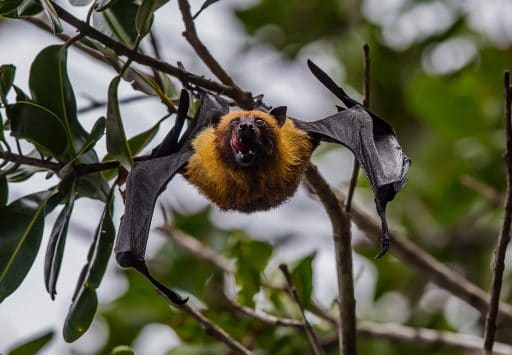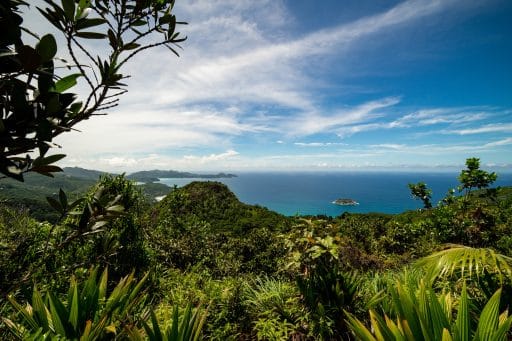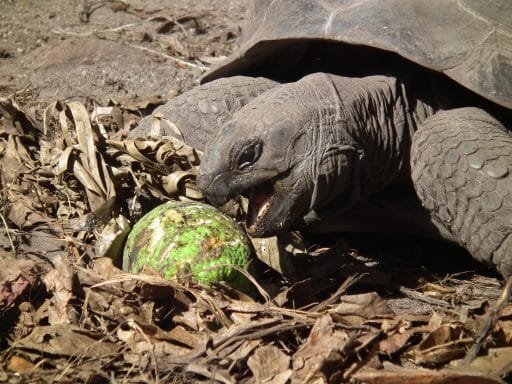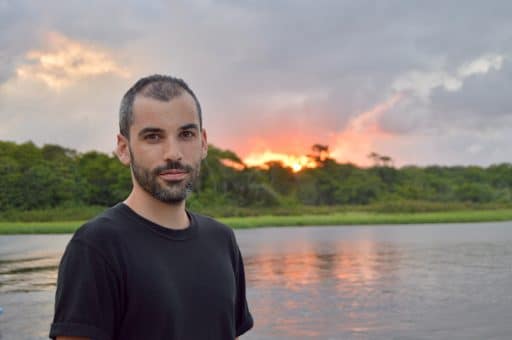Blog
Seed dispersal networks: lost interactions caused by species extinction
Posted 15th December 2020
Introduction
Introduction
Biodiversity is undergoing a great crisis worldwide, but if you have found your way to this blog, this is something you’re probably aware of by now. Something you may not know is that many ecosystems are losing their most important interactions due to rapid and increasing species extinction (Kaiser-Bunbury et al., 2010).
One of the species most affected are large vertebrates, many of which fulfill the function as the main seed dispersers in their respective habitats (Vidal et al., 2013). Such species include primates, big frugivory mammals, megabats, birds or tortoises, lizards and iguanas. As a result, we are not only losing such charismatic species, but their extinction can also translate into a deterioration and even the loss of integrity to ecosystems which they inhabit (Corlett, 2017). The reason for this is that in many ecosystems, animal and plant species have coevolved creating a dependency network. More specifically, if an animal specializes in eating and dispersing one particular plant and this animal then disappears, this specific plant will no longer be able to disperse its seeds, leading to a reduction in its distribution and perhaps a total extinction (Wandrag et al., 2015).
With that in mind, it is important to dedicate conservation efforts for these animal species, maintain and increase their populations and allow them to fulfil their functions as seed dispersers (Rumeu et al., 2017). Thus, this would maintain the structure of the ecosystem and therefore protect the rest of the species.

FIGURE 1: SEYCHELLES FLYING FOX (PTEROPUS SEYCHELLENSIS). PHOTO BY thomas lipke (https://unsplash.com/@t_lipke) on UNSPLASH
Let’s go on an island trip
The butterfly effect of species loss is even more accentuated on island ecosystems because of the limited, isolated, and fragile nature of such systems. When the population of large vertebrates is under threat, their key role as regulators or ecosystem engineers is compromised due to a lack of function in seed dispersal networks as mentioned before.
A clear example are the islands inhabited by giant tortoises such as on the Galápagos and Seychelles archipelagos. In these locations tortoises act as effective seed dispersers because of their large size and generalist diet (Blake et al., 2012; Nogales et al., 2017). More precisely, tortoises feed on large quantities of fruits and therefore disperse a large number of seeds.
On many of the islands where the tortoises were eradicated by humans, this dispersal function may have been affected causing changes in the ecosystem. For example, plant species with large fruits are not able to disperse their seeds effectively due to the absence of adequately sized animals to feed on them.
Consequently, refaunation projects have been carried out to recover populations of these species in the islands where they have been extinct (Gerlach et al., 2013), trying to re-establish trophic interactions in the ecosystem that may have been lost (Griffiths et al., 2010), thus maintaining or restoring the original habitat (Polak & Saltz, 2011).

FIGURE 2: seychelles ecosystem. “sans soucis road” (mahé, seychelles). PHOTO BY Jean Boris HAMON is licensed under CC BY-NC-ND 2.0
What happens if the disperser species is completely extinct?
In recent years, there has been an interesting debate about the use of taxon (a group of organisms classified as a unit, e.g. mammals) substitutes to recover lost interactions because of the extinction of certain species. In other words, a similar species was used to fulfill the function that the extinct species used to perform.
Aldabra giant tortoises (Aldabrachelys gigantea), for example, have been used as a taxon substitute to Cylindraspis species, a now extinct giant tortoise native to the Mascarene Islands in the Indian Ocean (Hansen et al., 2010), where giant tortoises have been absent over the last centuries (Austin & Arnold 2001). This may present an interesting conservation opportunity, although success may not be guaranteed, as introducing a non-native species into another ecosystem can result in new problems. In the case of seed dispersers, non-native species may disperse seeds of invasive plants, if present, having the opposite effect to the desired outcome of restoring the original habitat.
Therefore, multiple studies need to be performed on habitat conditions, human pressure and the interactive role of species in the ecosystems, including the impact on flora and fauna prior to proceeding with such projects.
One thing is clear: research has to continue!

FIGURE 3: aldabrachelys gigantea, “Seychelles Giant Tortoise eating”. photo by flicksmores is licensed under CC BY-NC-ND 2.0
Where could this go next?
There is currently a big emphasis on tree planting in response to the climate crisis. However, ecologists and conservationists have also been raising concerns on tree monocultures and/or the loss of unique habitats. In terms of seed dispersal, this huge experiment to re-absorb excess atmospheric CO2 and combat global heating raises some interesting questions:
- > How effective are big efforts to replant native trees when there are no species to disperse their seeds?
- > Why aren’t we using the power of nature (seed dispersers) to renature or re-wild?
- > Can humans really reconstruct complex ecological networks and systems?
- > What is your opinion on the use of taxon substitutes to try to recover ecological interactions that have been lost?
- > Can you think of any other species that could be used as a taxon substitute? Why and in which ecosystem?
One thing is for sure, seed dispersers will always play an important role in shaping and supporting ecosystem integrity, and it will be interesting to see how these new man-made forests will emerge and mature over time.
About the Author
Sergio García Peña is a biologist with an MSc (Distinction) in Biodiversity and Conservation and an academic focus in tropical areas. Sergio is passionate about nature and travel and has undertaken conservation research in Costa Rica and the Seychelles. He has also worked at the Royal Botanical Gardens, Madrid, Spain conducting research on animal diet studies.
Email: sgarciap90@gmail.com
References
Austin, J.J., Arnold, E.N., 2001. Ancient mitochondrial DNA and morphology elucidate an extinct island radiation of Indian Ocean giant tortoises (Cylindraspis). Proceedings. Biol. Sci. 268, 2515–2523. https://doi.org/10.1098/rspb.2001.1825
Blake, S., Wikelski, M., Cabrera, F., Guezou, A., Silva, M., Sadeghayobi, E., Yackulic, C.B., Jaramillo, P., 2012. Seed dispersal by Galápagos tortoises. J. Biogeogr. 39, 1961–1972. https://doi.org/10.1111/j
Corlett, R. T. (2017). Frugivory and seed dispersal by vertebrates in tropical and subtropical Asia: an update. Global Ecology and Conservation, 11, 1-22. https://doi.org/10.1016/j.gecco.2017.04.007
Gerlach, J., Rocamora, G., Gane, J., Jolliffe, K., Vanherck, L., 2013. Giant Tortoise Distribution and Abundance in the Seychelles Islands: Past, Present, and Future. Chelonian Conserv. Biol. 12, 70–83. https://doi.org/10.2744/ccb-0902.1
Griffiths, C. J., Jones, C. G., Hansen, D. M., Puttoo, M., Tatayah, R. V., Müller, C. B., & Harris, S. (2010). The use of extant non‐indigenous tortoises as a restoration tool to replace extinct ecosystem engineers. Restoration Ecology, 18(1), 1-7. https://doi.org/10.1111/j.1526-100X.2009.00612.x
Hansen, D.M., Donlan, C.J., Griffiths, C.J., Campbell, K.J., 2010. Ecological history and latent conservation potential: large and giant tortoises as a model for taxon substitutions. Ecography (Cop.). no-no. https://doi.org/10.1111/j.1600-0587.2010.06305.x
Kaiser-Bunbury, C.N., Traveset, A., Hansen, D.M., 2010. Conservation and restoration of plant–animal mutualisms on oceanic islands. Perspect. Plant Ecol. Evol. Syst. 12, 131–143. https://doi.org/10.1016/j.ppees.2009.10.002
Nogales, M., González-Castro, A., Rumeu, B., Traveset, A., Vargas, P., Jaramillo, P., Olesen, J.M., Heleno, R.H., 2017. Contribution by vertebrates to seed dispersal effectiveness in the Galápagos Islands: a community-wide approach. Ecology 98, 2049–2058. https://doi.org/10.1002/ecy.1816
Polak, T., Saltz, D., 2011. Reintroduction As an Ecosystem Restoration Technique. Conserv. Biol. 25, 424. https://doi.org/10.1111/j.1523-1739.2011.01669.x
Rumeu, B., Devoto, M., Traveset, A., Olesen, J. M., Vargas, P., Nogales, M., & Heleno, R. (2017). Predicting the consequences of disperser extinction: richness matters the most when abundance is low. Functional Ecology, 31(10), 1910-1920. https://doi.org/10.1111/1365-2435.12897
